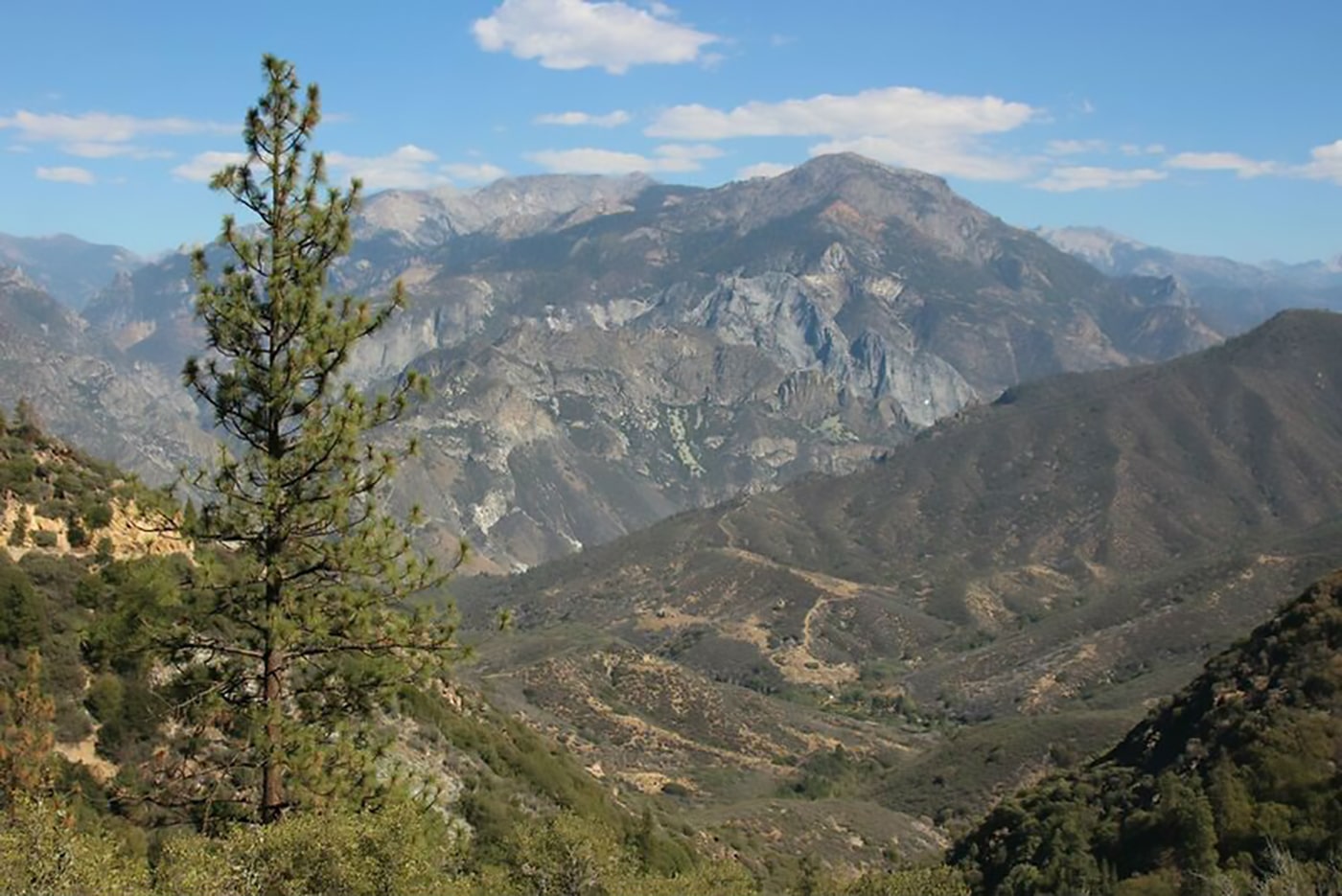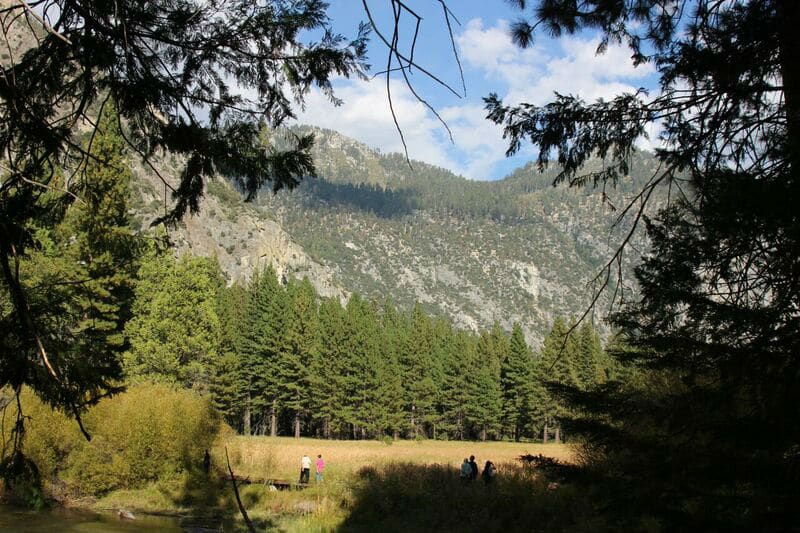
When I moved to California years ago, I vowed to explore it. After settling in San Diego, I enjoyed many visits to northern California and developed a real connection with some of California’s well known destinations – L.A., San Francisco, Santa Barbara, Carmel and Napa. But those journeys paled in comparison to Yosemite, Kings Canyon and Sequoia.
“Rock on rock, ice on ice,” is the description explorer John C. Fremont attributed to the dramatic visual that is the Sierra Nevada mountain range. Glaciers sculpted this landscape, an area full of altitude and attitude. A geography where nature and history are perfectly preserved, it’s home to three national parks, each of which celebrated a significant birthday last year – Kings Canyon National Park at 75 and Yosemite and Sequoia National Parks at 125. Located in central California, they are a four and a half hour drive from either Los Angeles or San Francisco. The Majestic Mountain Loop, a 400-mile circular route, connects these three larger than life national parks.
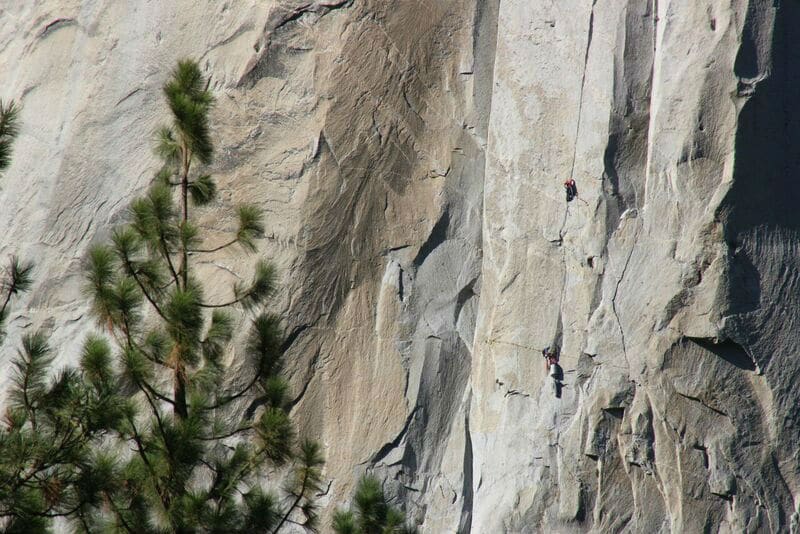
At 747,956 acres, Yosemite National Park is the biggest and approximately the size of Rhode Island. It’s replete with wonders: two glaciers, countless waterfalls, 3,000 meadows, 800 miles of hiking trails, 20 miles of paved bike paths, 37 species of native trees, 1,450 plant species, 90 mammals and more than 250 types of birds! Its star attraction, however, are the 300 to 500 black bears found there. But the park’s big three sights – El Capitan, Half Dome and Yosemite Falls – are what beckon the millions of visitors.
El Capitan is the world’s biggest piece of granite. So large (it would be possible to stack three Empire State Buildings to the monolith’s top), climbers from around the world come to conquer it. The most recent triumph – a scaling of a notoriously difficult section called the Dawn Wall – was completed in 2015 after a 19-day trek. Though I was not a spectator to that world-watched victory, I was privy to others’ attempts. Sitting on a log in El Capitan Meadow with binoculars, I watched climbers ascending the standing stone. “See that climber. That’s not a backpack. That’s his bed . . . to overnight against the wall,” a guide explained as I tracked one’s progress.
Half Dome is a Yosemite icon. Rising nearly 5,000 feet above Yosemite Valley, it dominates most views and its 14 to 16-mile roundtrip hike provides another Yosemite challenge. Yosemite Falls consists of three sections: Upper Yosemite Falls, Middle Cascades and Lower Yosemite Falls. As the world’s fifth and North America’s tallest waterfall, viewing it in full force is Discovery Channel worthy. The best time to see it is spring, with peak runoff typically between May and June. In winter, look for an ice cone forming at the base of the Upper Falls.
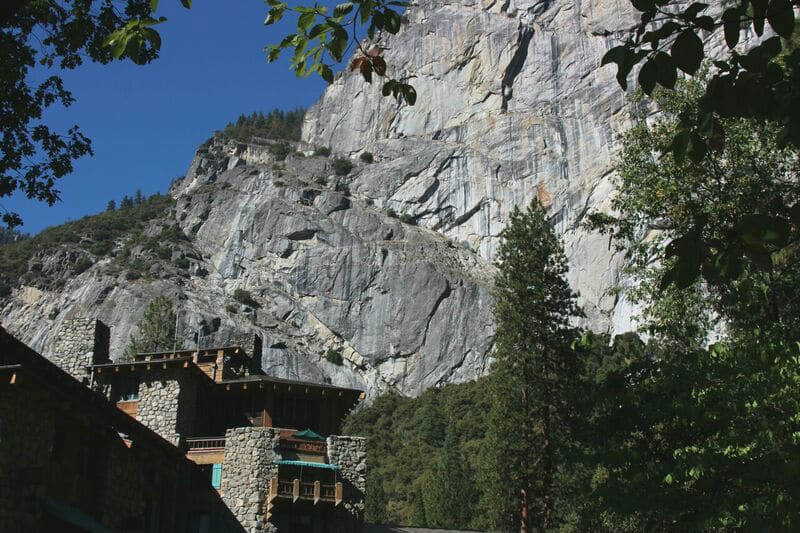
Tunnel View, one of the world’s most popular lookouts, appears after emerging from the east end of Wawona Tunnel on Highway 41. Looking east into the heart of Yosemite Valley, you can see El Capitan, Half Dome and Bridalveil Fall. You’ll recognize the outlook from Valley View. The very vista seen on Visa credit cards, this panoramic landscape from a point alongside the Merced River is the entire Yosemite Valley.
Activities in this adventure playground reflect the made-in-heaven alpine setting. From ziplining to river rafting, there are also morning nature walks, evening moonlight tours, summer night campfires, even a Halloween cemetery tour. And for the beginning adventurer, Yosemite Mountaineering School’s Go Climb a Rock class is a hands-on introduction to the sport.
Tip: Hiking Half Dome now requires a permit, so check at the Visitors Center.
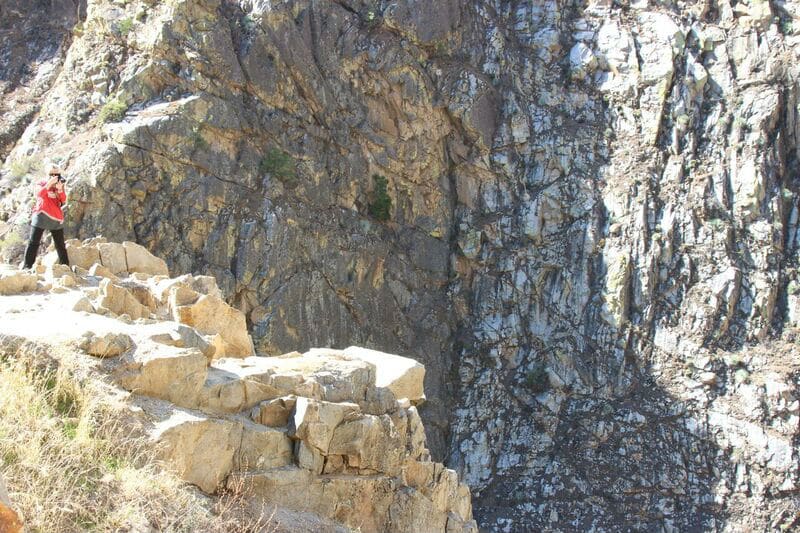
Kings Canyon National Park, the least visited of the three, is so spectacular that noted naturalist and founder of the Sierra Club, John Muir, deemed it “a rival to Yosemite.” Encompassing 461,901 acres and with a maximum depth of nearly 8,000 feet, this glacial valley is home to one of the nation’s deepest canyons.
A popular drive is the 30-mile route along Kings Canyon Scenic Byway from Grant Grove to Cedar Grove, where there are breathtaking outlooks and smile inducing signage (example: “Caution: Ice Cream ahead”). Shortly after exiting the forests of Grant Grove the road descends and unfolds a vast panorama at Kings Canyon Overlook, then a granite-walled inner canyon of the South Fork and finally Cedar Grove, the reward at the bottom. A quiet setting along the Kings River, it’s where the road ends. Our greeting: “Bears, bears, and more bears have been here all week. We saw two cubs about an hour ago.” Unfortunately, that luck did not extend to us.
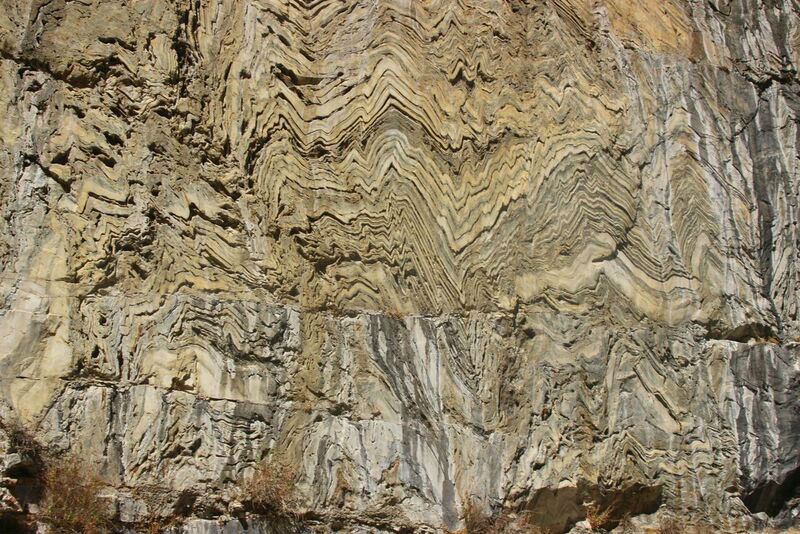
Bears or no bears, Road’s End did not disappoint. Situated beside a riverbank and sprinkled with wildflowers, Zumwalt Meadow is surrounded by an open forest and a backdrop of mountains. An occasional wooden bench allows appreciation of the encompassing beauty. Nearby, Muir Rock is the oversized, flat-topped riverbed boulder named after John Muir. It’s where he took fellow members of the Sierra Club when they visited and where he reportedly gave many talks.
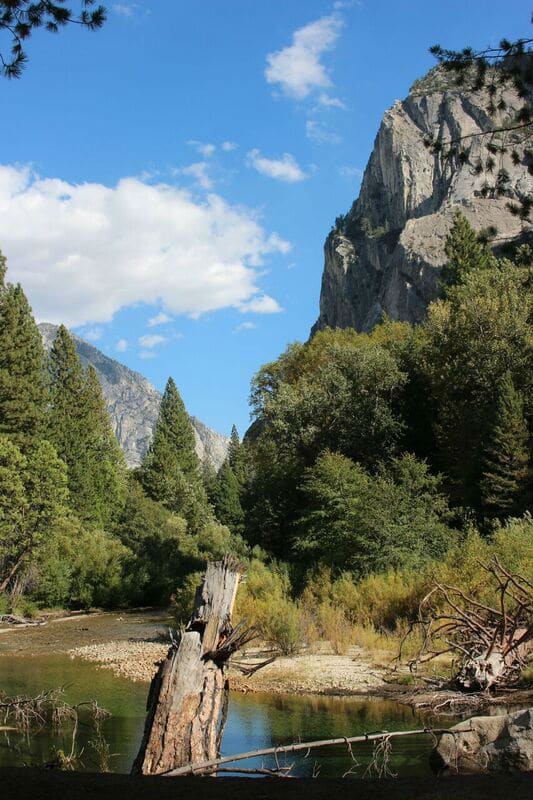
At the opposite end of the route, Grant Grove Village is within walking distance of General Grant Grove, a stand of trees showcasing some of the world’s finest sequoias. Best viewed from a paved loop in the woods, General Grant Tree is found at midway point. One of the earth’s largest trees, it was designated “The Nation’s Christmas Tree” in 1926 by President Calvin Coolidge and is the country’s only living National Shrine.
Tip: Fill up your tank before descending to the bottom of the canyon where there are no gas stations.
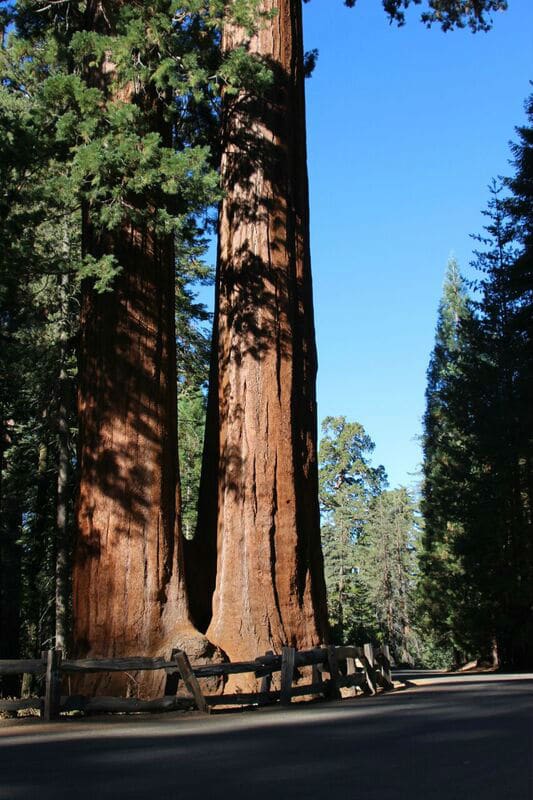
Sequoia National Park is California’s second national park and like Kings Canyon it’s known for the world’s largest groves and biggest giant sequoias. At 404,063 acres it symbolizes longevity and strength. John Muir said of the sequoia: “The Big Tree is nature’s forest masterpiece and as far as I know, the greatest of living things.”
Facts: Sequoias grow in groves, not forests; are found between 5,000 and 7,000 feet in elevation on the western slope of the Sierra Nevada; can reach up to 300 feet in height and live to more than 3,000 years old.
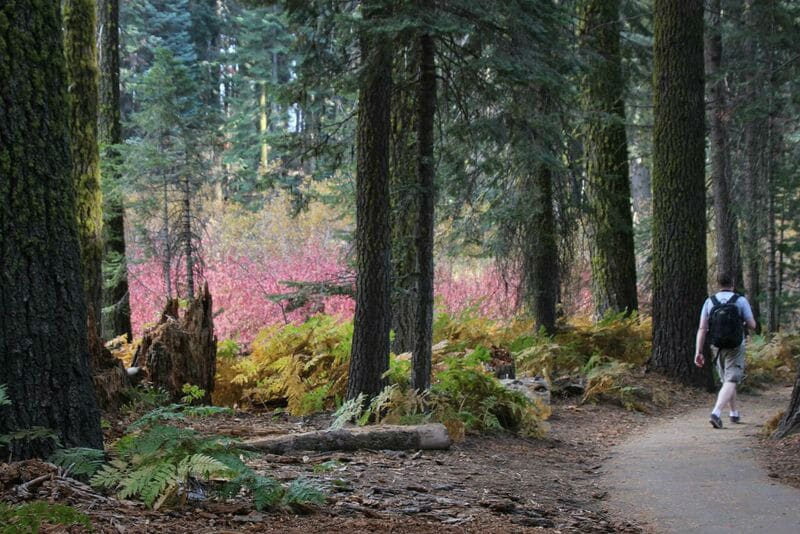
Sharing a common boundary and attracting more than 1.5 million annual visitors, Sequoia and Kings Canyon have more than 800 miles of marked trails; more than 1,200 species of plants; 330 native mammals, birds, fish, reptiles and amphibians; more than 200 caves and the highest mountain in the contiguous 48 states, Mt. Whitney (Sequoia National Park).
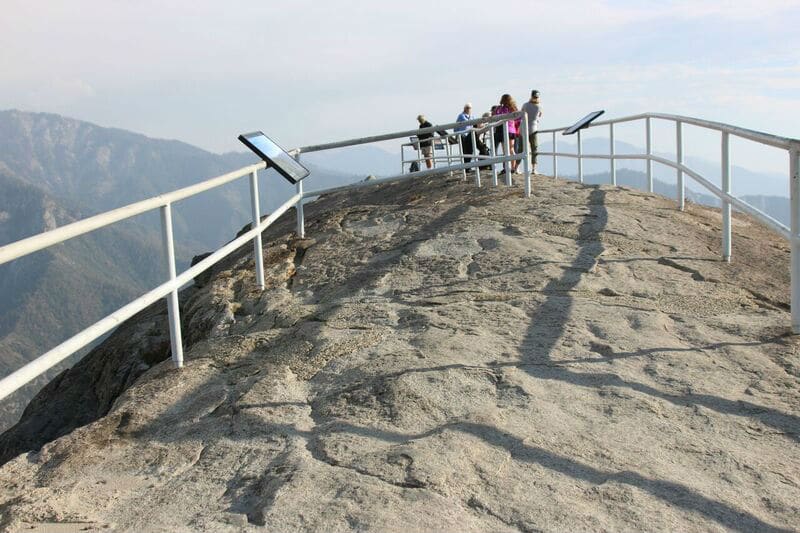
Moro Rock’s 360-degree view is your reward for climbing approximately 400 steps to the summit of this giant granite dome. The secret: Put one foot in front of the other until the view is nothing but sky. Tunnel Log, a fallen sequoia across which a passageway was cut, is the parks’ only tree through which you can drive. Towered by sequoias, Crescent Meadow is circled by a one-and-a-half mile trail but the wetland is so fragile, the only way to enter the field is upon naturally fallen logs.
Located within Giant Forest, at nearly 275 feet tall and 102 feet in circumference, the sequoia known as General Sherman has no equal. Estimated to be 2,200 years old, other trees in the world are both taller and wider; but in terms of trunk volume, the Sherman earns the title of the World’s Largest Tree.
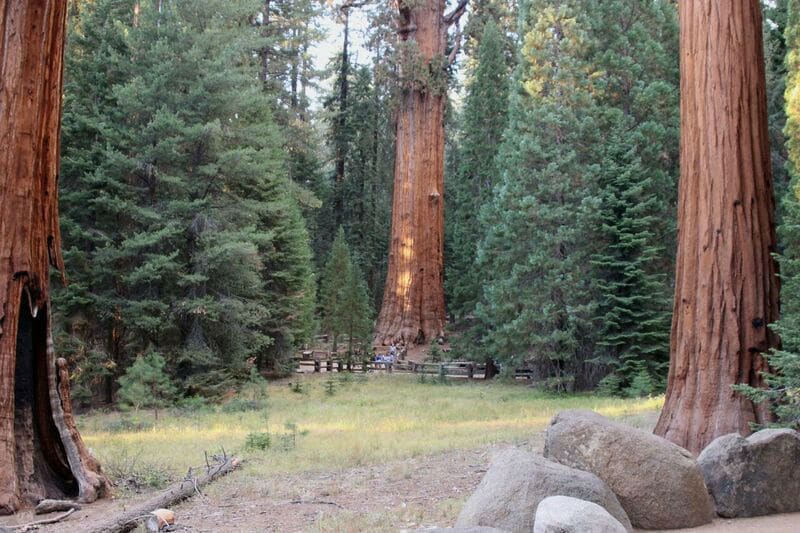
Though there are 275 caves in the two parks, Crystal Cave is one of only two open to the public (the other is Boyden Cavern). Formed of limestone transformed over the years into marble, adornments include ceilings of stalactites and carpets of stalagmites. Regardless of the time of year, wear a jacket for temperatures typically hover around 50 degrees.
Tip: If searching for bears be alert to cars pulled over, passengers out and camera in hand – typically a good sign. But be sure to park only in designated areas. Additional advice from a ranger is to seek out sugar pine trees; bears love their cones.
My discovery of the Sierra Nevada was like finding gold without the rush. Compared to my year after year, go-to haunts, my summation is simple: they have faded to black and white while the parks remain in vivid color.
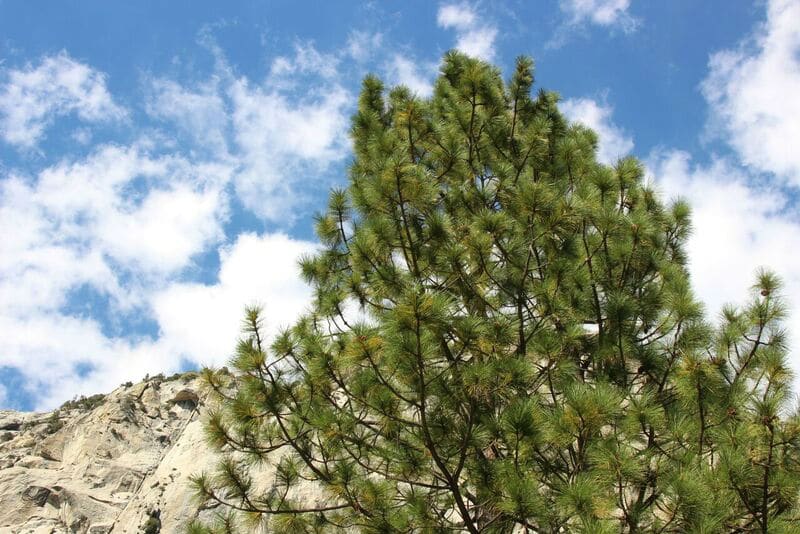
*An area that is pure drama, this region is polished granite domes punctuated by cascading waterfalls, rugged peaks abutting sun-soaked high country, giant sequoias clustered in groves and diminutive wildflowers blanketing meadows.
www.travelyosemite.com
www.visitsequoia.com/kings-canyon-park
www.visitsequoia.com/sequoia-national-park
The area code for Yosemite National Park is 209.
The area code for Kings Canyon and Sequoia National Parks is 559.
Where to Stay:
Ahwahnee Hotel – cited as “an exceptional example of the National Park Service’s rustic architecture, known as parkitecture,” this AAA Four-Diamond hotel which opened in 1927 has such a rich past, it’s on the National Register of Historic Places. Constructed from wood and stone, it offers one of a kind Yosemite views from many of its guest rooms, magnificent halls and showcase dining room. It has attracted notable guests such as Queen Elizabeth II, President John F. Kennedy and the Shah of Iran. 1 Ahwahnee Drive, Yosemite National Park, 209-372-1407, www.yosemitepark.com/the-ahwahnee.aspx
Tenaya Lodge – a perfect blend of rustic and refined, the unofficial motto of this AAA Four-Diamond lodge is “roughing it minus the rough part.” Located on 48 acres just two miles from the southern entrance to Yosemite, its lobby reflects the region with Native American-inspired carpets, mounted deer heads and a life-sized bear at its stone fireplace (as if on-guard). Don’t leave without browsing the gift shop. A souvenir giant sequoia sapling is ready to plant. 1122 Highway 41, Fish Camp, 559-683-6555, www.tenayalodge.com
Wuksachi Lodge – an oversized stuffed bear sits on the lobby couch of a cedar and stone lodge which is the centerpiece of three detached buildings surrounded by mountains. Seasonal fun includes pumpkin carving contests, snowshoeing followed by hot chocolate and summer dark sky events. 64740 Wuksachi Way, Sequoia National Park, 559-565-4070, www.visitsequoiakingscanyon.com/lodging
Where to Eat:
Ahwahnee Dining Room – showcasing stunning nature views, the window-lined grand dining room is a highlight of any Yosemite visit. Its premier meal is the annual Bracebridge Dinner (multiple dates each December). Offered since the hotel opened to entice winter guests, it has become a coveted event that “transforms the hotel into an 18thcentury English manor for food, song and mirth.” 1 Ahwahnee Drive, Yosemite National Park, 209-372-1407, www.yosemitepark.com/the-ahwahnee.aspx
Embers Restaurant – “This restaurant is where we show off,” says Sean Mangold, Tenaya Lodge’s food and beverage manager, of its premier dining experience. Highlights of my two-and-a-half hour dinner here were a lobster bisque with black truffle crust and Bananas Diablo flamed tableside. 1122 Highway 41, Fish Camp, 559-683-6555, www.tenayalodge.com/embers
Peaks Restaurant – serving up California food at its best, Brandon McCarter, general manager Delaware North at Sequoia & Kings Canyon, takes pride in the restaurant’s fresh, local approach to cuisine. “We stay very seasonal.” From starters to entrees, popular examples include deep fried chicken and waffles, vegan chili and seared venison leg loin. 64740 Wuksachi Way, Sequoia National Park, 559-565-4070, www.visitsequoia.com/lodging.aspx
What to See:
Badger Pass – as California’s first and Yosemite National Park’s only ski area, this sports park has downhill skiing and snowboarding as well as 90 miles of cross-country and snowshoeing trails. Open mid-December through early April (weather dependent), it’s a 21 mile drive from Yosemite Valley. 7082 Glacier Point Road, Yosemite National Park, 209-372-8430 (ext. 5), www.yosemitepark.com/BadgerPass

